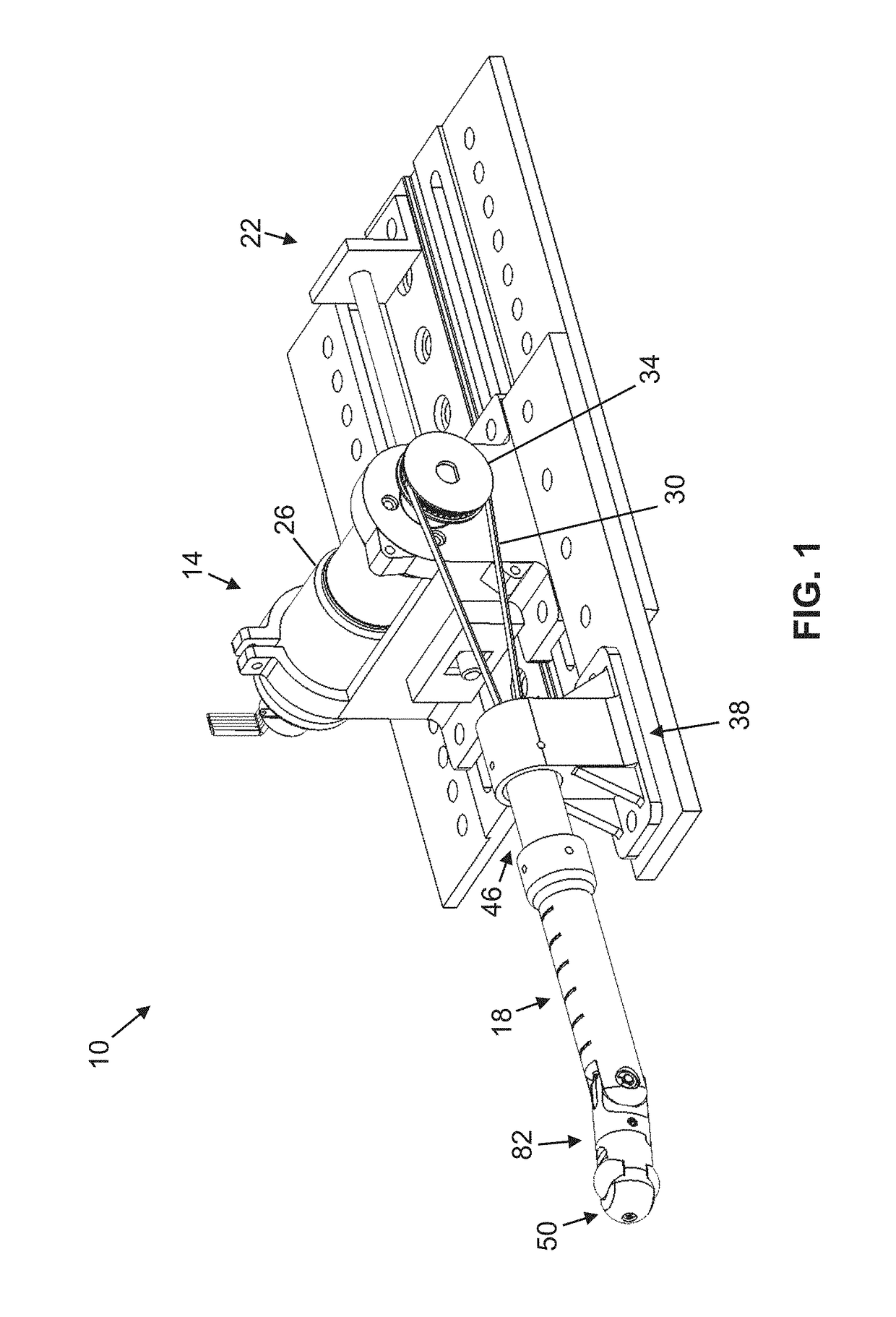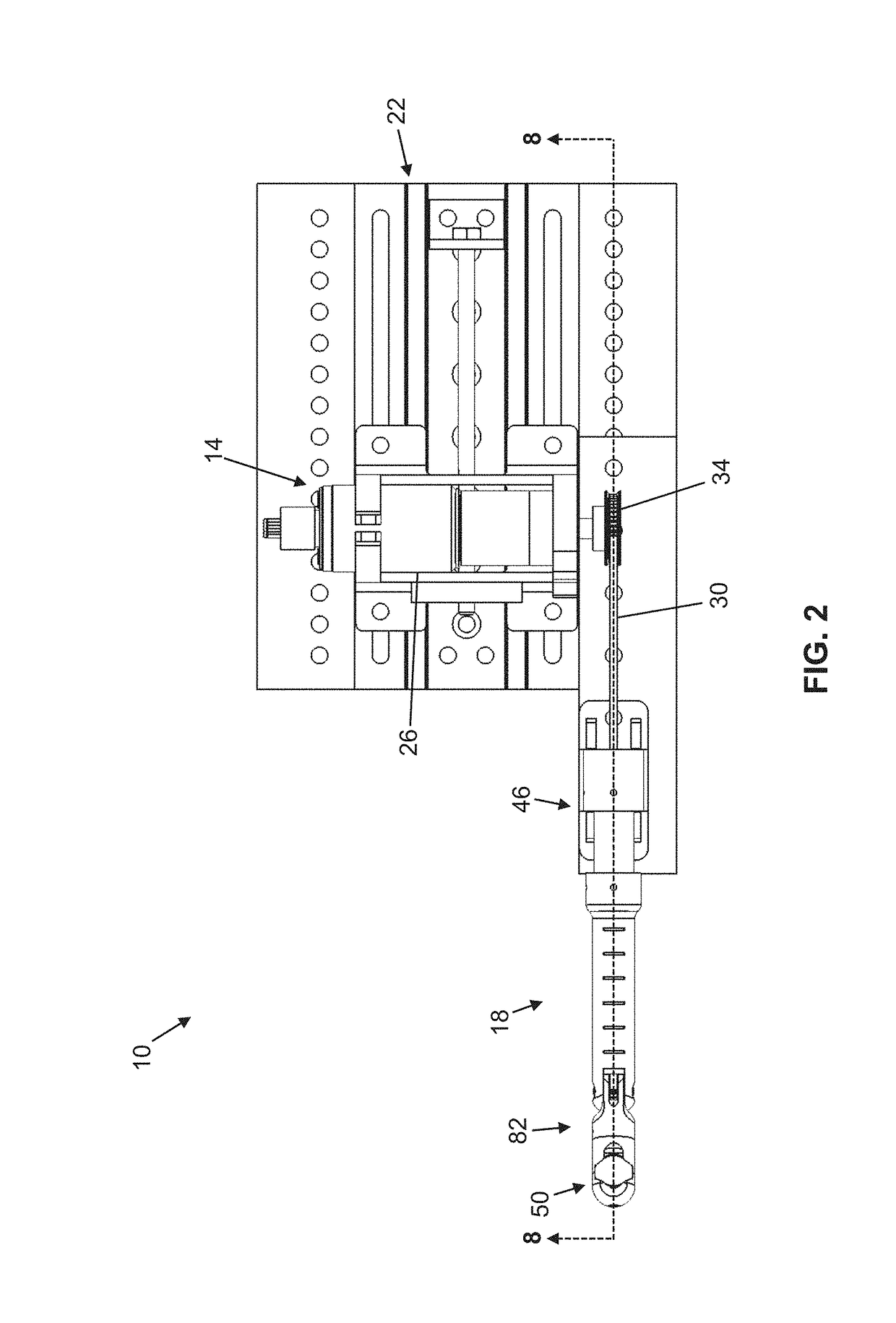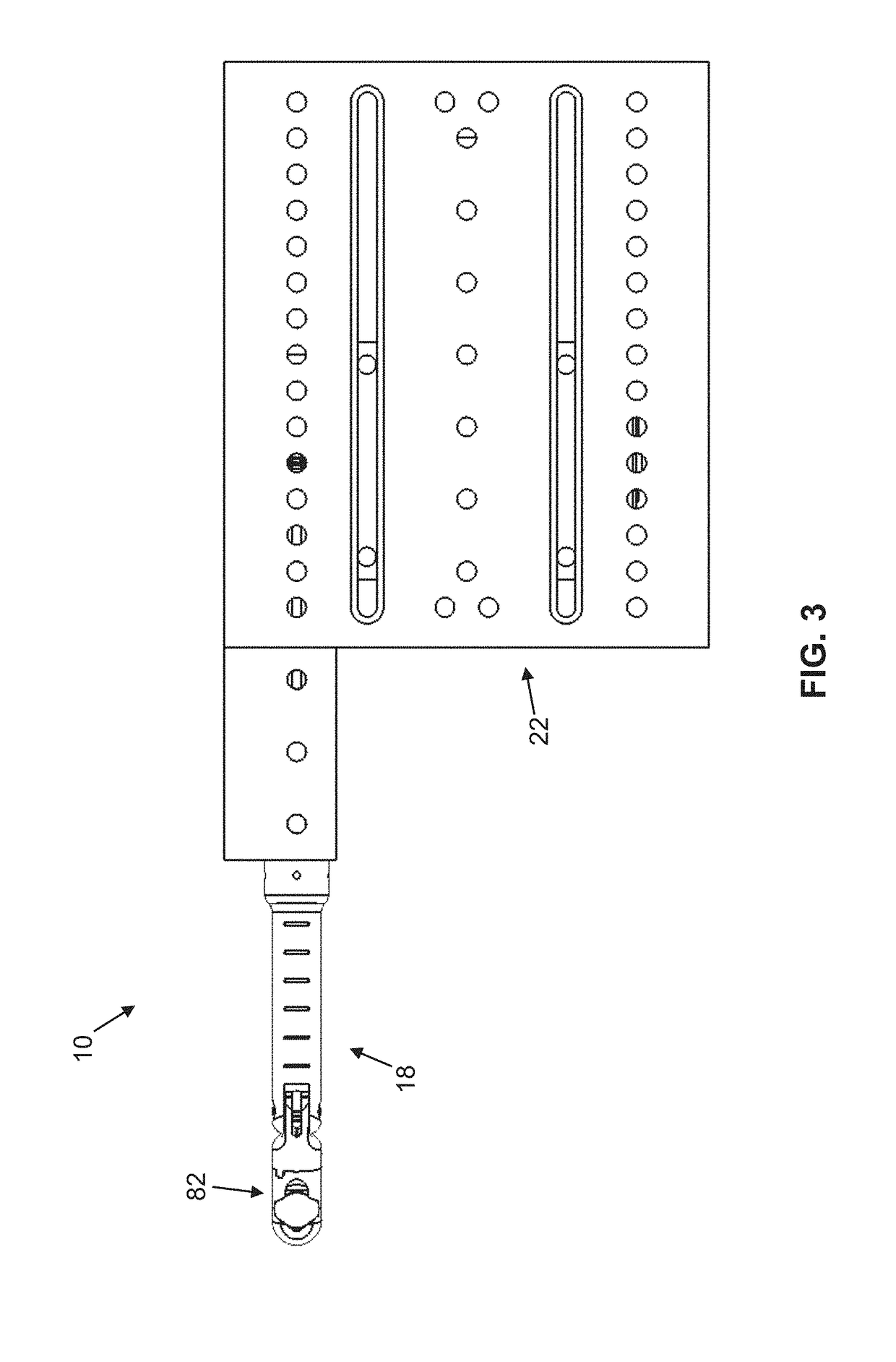Systems and Apparatuses for Determining Biomechanical Properties of Tissue and Related Methods
a biomechanical and tissue technology, applied in the field of systems and apparatuses for determining biomechanical properties of tissue and related methods, can solve the problems of urinary incontinence, pelvic organ or vaginal wall protrusion outside the body, impediment to movement, and pain
- Summary
- Abstract
- Description
- Claims
- Application Information
AI Technical Summary
Benefits of technology
Problems solved by technology
Method used
Image
Examples
example 1
[0049]In this example, the sensor (e.g., 114) tested was the Interlink Electronics FSR 400 Short Force-sensitive Resistor, available from Interlink Electronics, Inc., of Westlake Village, Calif., USA. The sensor (e.g., 114) included a polymer thick-film device that contained a conductive pattern. When the sensor (e.g., 114) was compressed, the resistance of the conductive pattern would decrease relative to the compression force applied to it.
[0050]The sensor (e.g., 114) required at least 50 gr of equivalent force before generating a stable sensor output, which required the user to preload the sensor before using it for measurements below that threshold; otherwise, the user risked operating in the “dead zone” where no force is being sensed. FIG. 17 depicts the averaged calibration data points and calibration curve (dotted line).
[0051]The repeatability of the response of the sensor (e.g., 114) was highly dependent on the repeatability of the sensor engagement method. It wa...
example 2
[0111]In this example, the objective was to compare reaction forces of the human anterior vaginal wall in control (C) and prolapsed (P) women in response to pressure applied at different angles of indentation through an automated system (e.g., 134) having a distal sensor (e.g., 114).
[0112]A. Method
[0113]In this example, a tripod-mounted, body (e.g., 18) equipped with a calibrated, polymer thin-film sensor (e.g., 114) at its tip (e.g., 90) and automated by NI LabView 2105 software for motion control via an actuator (e.g., 14) was used to create anterior vaginal wall deformations at 10, 15 and 20 degree angles. Age-matched women in the C and P groups were compared. All measurements were performed in the supine position in the operating room, with patients under general anesthesia prior to the start of the operation and after the bladder was drained. Each deformation included a 1 second upwards indentation, a 1 second maintenance “hold”, and a 1 second return of the fingertip to the ba...
PUM
 Login to View More
Login to View More Abstract
Description
Claims
Application Information
 Login to View More
Login to View More - R&D
- Intellectual Property
- Life Sciences
- Materials
- Tech Scout
- Unparalleled Data Quality
- Higher Quality Content
- 60% Fewer Hallucinations
Browse by: Latest US Patents, China's latest patents, Technical Efficacy Thesaurus, Application Domain, Technology Topic, Popular Technical Reports.
© 2025 PatSnap. All rights reserved.Legal|Privacy policy|Modern Slavery Act Transparency Statement|Sitemap|About US| Contact US: help@patsnap.com



